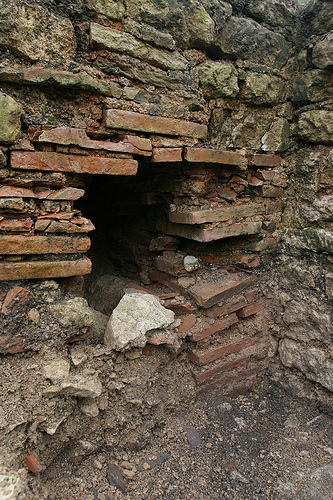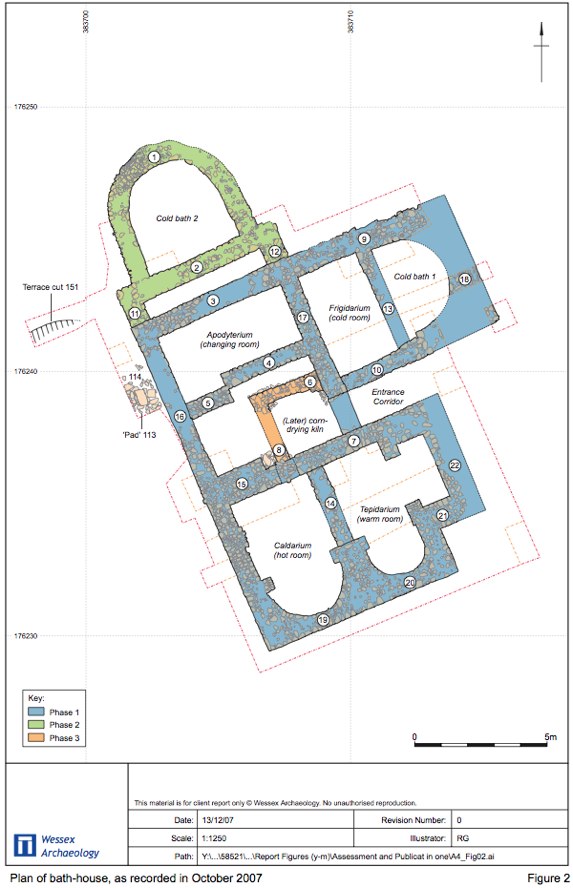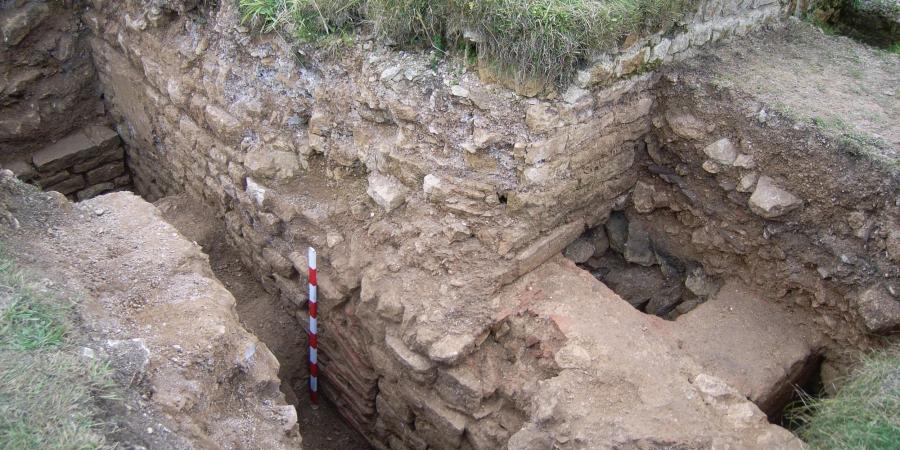51.473765, -2.263098
In 2004, the remains of a small Roman building were uncovered on the side of a narrow, steep-sided valley near North Wraxall in Wiltshire. The building, a bath-house, is a short distance from an imposing Roman villa, excavated in the mid 19th century.
In 2007 Historic England, Wiltshire Council and Wessex Archaeology funded a community excavation to find out as much as possible about the building and to conserve it for the future.

The three-week investigation achieved an astonishing amount, thanks to nearly fifty volunteers who came to help. Their work confirmed that the building was a bath-house, probably built in the early second century AD. The original building had been altered by the addition of a second frigidarium (cold room), probably to replace the first which may have suffered from subsidence. Later on, when it was no longer used as a bath-house, the building had been adapted for corn drying.
The success of this work led to the establishment of a community project. Excavations in 2008 and 2009 set out to explore the unusual nature and difficult location of the bath-house and have shown that it was preceded by a high status building with glass windows, a mosaic floor, and painted wall plaster. The character of this building is not yet established with certainty but it may be a temple, which would be both rare and important.
Plan of the Roman bath-house

